Syn.: Rhodiola atropurpurea (Turcz.) Trautv. et C. A. Mey., Rhodiola rosea subsp. integrifolia (Raf.) H. Hara, Rhodiola rosea var. integrifolia (Raf.) Jeps., Sedum atropurpureum Turcz., Sedum integrifolium (Raf.) A. Nelson, Tolmachevia integrifolia (Raf.) Á. Löve et D. Löve
Family: Crassulaceae J. St.-Hil.

Distribution: Species of the west of North America found from Alaska, through Canada’s Northwest Territories, Yukon, British Columbia and Alberta and through US states of Washington in the west to Montana and going south to New Mexico and California with exception of Arizona, and in Asia on the other side of Bering Strait (Kamchatka, Khabarovsk, Magadan).
Ecology: Moist rocky slopes and outcrops, alpine meadows and tundra in elevations from sea level to 2000 m, in some areas up to 4000 m. It blooms from June to July.
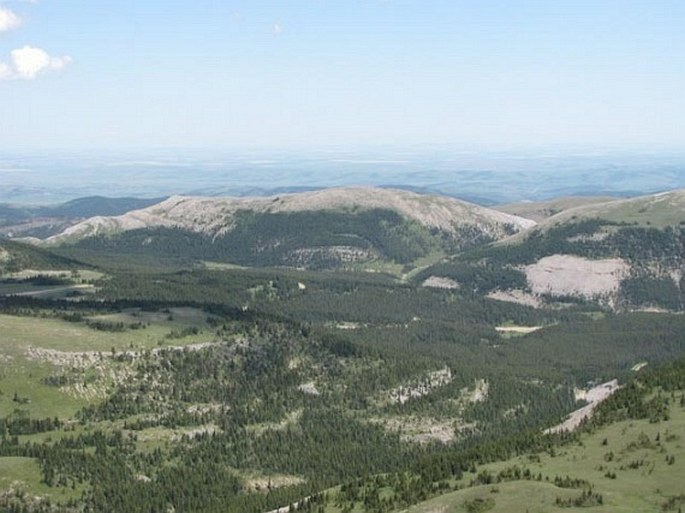
Description: Perennial succulent, stems 5–35 cm tall, from thick, rose fragrant rootstock. Leaves alternate, fleshy, oval to linear-oblong, 1–3 cm long, 3.5–5 mm wide, margins smooth to slightly toothed, tipped red. Inflorescence is terminal cyme, densely flowered. Flowers dark red to purplish, 6–10 mm across; male female or both; sepals 4–5; petals 4–5; stamens 8 or 10; pistols 4–5. Fruit are 5 erect capsules (follicles), 4–5 mm long, reddish or purplish, with spreading, pointed tips, splitting open along their upper side.
Usage: Roseroot leaves and stems are juicy and can be eaten, when water is not available. They are rich in vitamin A and C. The rhizomes can also be eaten. Siberian Eskimos boil them with seal fat or reindeer fat.
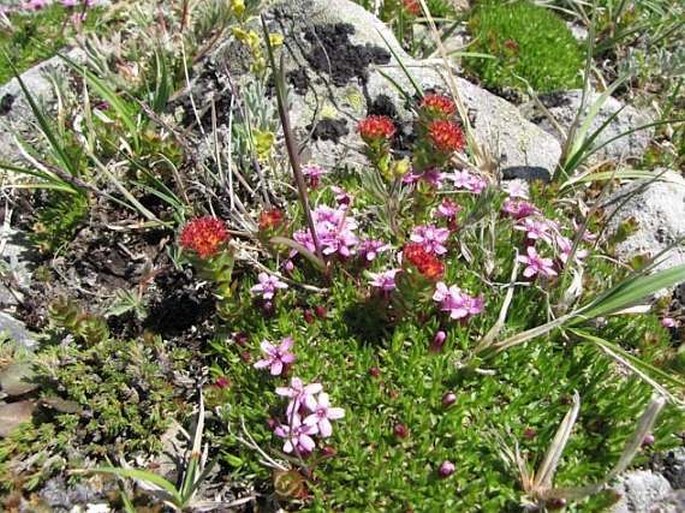
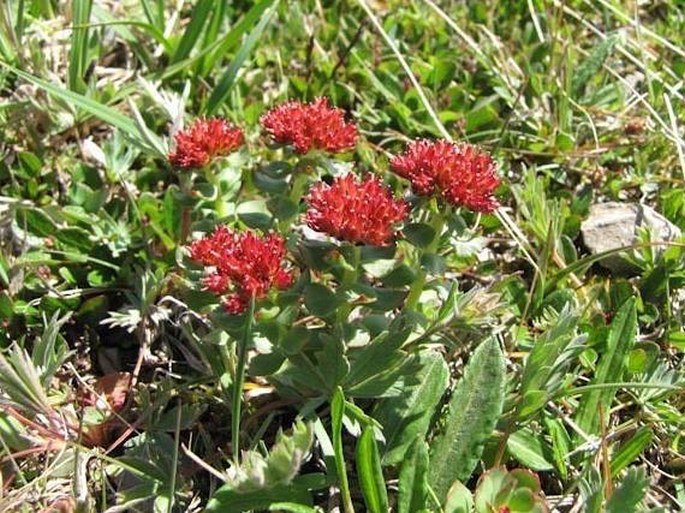
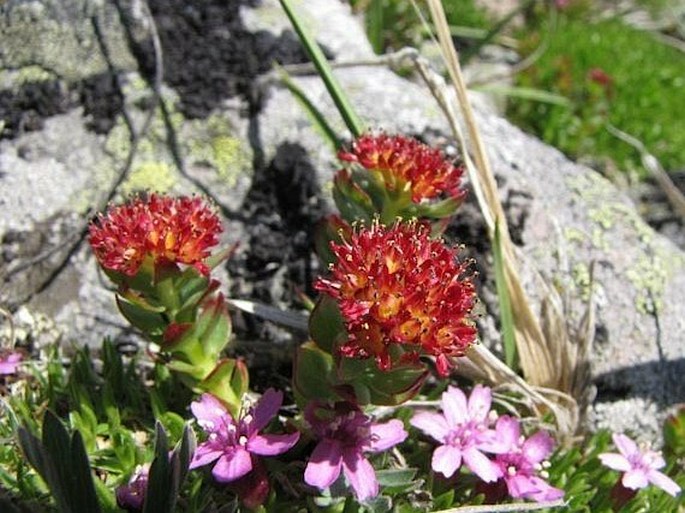
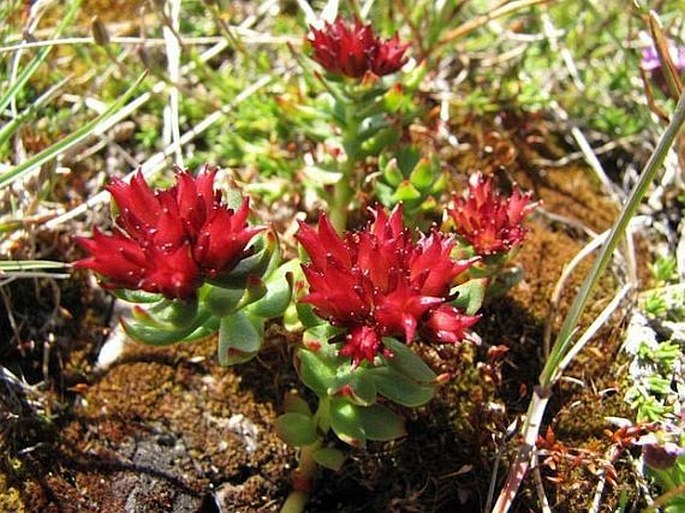
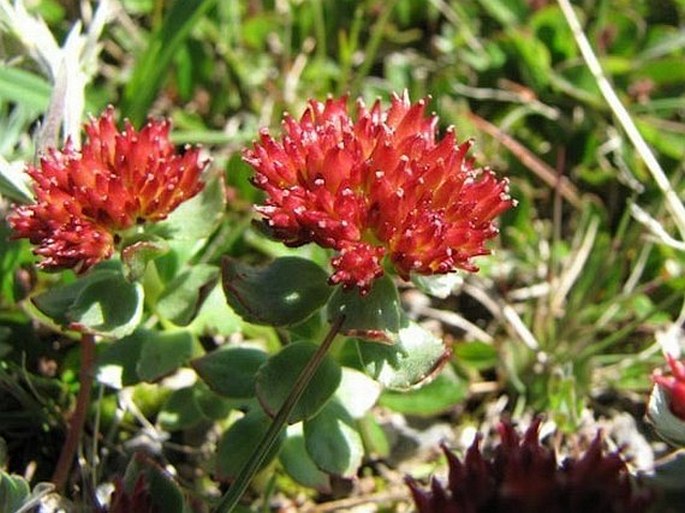
These images were taken in Canada, Alberta, Plateau Mountain (July 2011).


